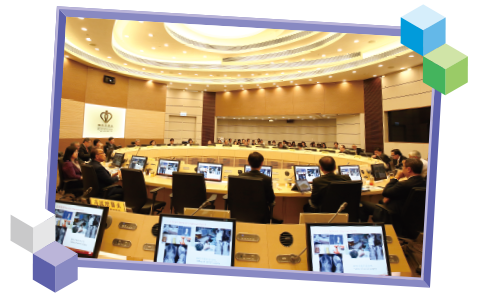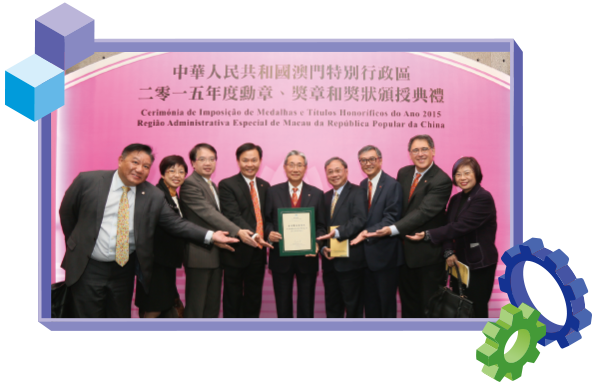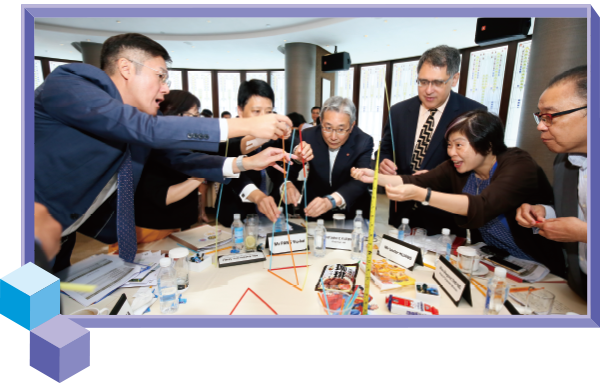
Corporate Governance
The Hospital Authority (HA) is a statutory body established under the Hospital Authority Ordinance (Cap. 113) (the HA Ordinance) in December 1990, responsible for managing all public hospitals in Hong Kong. HA is accountable to the Hong Kong Special Administrative Region (HKSAR) Government through the Secretary for Food and Health.
Principles
The Board acknowledges its responsibility for and commitment to corporate governance principles and recognises that the Authority’s stakeholders expect the highest standards of performance and accountability and conduct.
Hospital Authority Board
Under the HA Ordinance, the Chief Executive of the HKSAR appoints members to the HA Board. The 2015-16 Board consisted of 28 members, including the Chairman. Details are listed in Appendix 1. Membership of the Authority comprises 24 non-public officers, three public officers and one principal officer (the Hospital Authority Chief Executive). Board members are not separately remunerated.
The HA Board meets formally about 12 times a year and any other times as required. In 2015-16, it met 15 times and considered over 130 agenda items, covering an array of important matters in leading and managing HA, including formulation of policies and strategies, steering and monitoring of the planning, development and operation of hospital services and supporting facilities, resource management, risk management and internal control, contingency preparedness and governance etc. In addition, five Board papers covering urgent matters were circulated for approval between meetings.
To ensure accountability and stewardship of HA’s resources and effective management of services, sustainable efforts were made by the HA Board to sustain the momentum on a spectrum of enhanced practices validated in the previous corporate governance review. Building on a well-established system, the Organisation-wide Risk Management Policy and Strategy were refreshed and approved by the Board in 2015 for a holistic and standardised approach to risk management across HA, thereby improving the organisational processes for risk identification and development of risk mitigation strategies. On the front of the HA Review, the HA Board had set up a special task force at the Board level to steer the strategy and monitor the implementation of the recommendations of the Steering Committee on Review of HA. With the endorsement of the Board, HA released a detailed Action Plan on 22 October 2015 to guide the implementation of over 100 items of enhancement measures. As undertaken in the Action Plan, the Board would continue to reinforce its leading and managing role in HA.
The Code of Corporate Governance Practices (the Code) aims to provide appropriate structures and processes for ensuring a robust governance and accountability framework for guiding members of the HA Board and its committees in performing their roles and responsibilities. In view of rising public expections on integrity and probity involving the public sector and to drive for continuous improvement, the Code was further reviewed in the past year having regard to good practices in the Sample Code of Conduct for Members of Public Bodies promulgated by the Independent Commission Against Corruption.
During the year, familiarisation programme in the form of sharing sessions was arranged for new members. Also, visits to external corporates were conducted to keep members abreast of the knowledge and skills applicable to public sector operations and changing environment.
Board Committees
For optimal performance of roles and exercise of powers, the HA Board has established 11 functional committees: Audit and Risk Committee, Emergency Executive Committee, Executive Committee, Finance Committee, Human Resources Committee, Information Technology Services Governing Committee, Main Tender Board, Medical Services Development Committee, Public Complaints Committee, Staff Appeals Committee and Supporting Services Development Committee. Membership of the committees, terms of reference and focus of work in 2015-16 are outlined in Appendix 3.
Hospital Governing Committees
To enhance community participation and governance of public hospitals, 32 Hospital Governing Committees (HGCs) were established in 40 hospitals and institutions in accordance with the HA Ordinance. These committees are listed in Appendix 4. In 2015-16, 32 HGCs conducted a total of 130 meetings. They received regular management reports from Hospital Chief Executives, monitored operational and financial performance of the hospitals, provided policy guidance on hospital management, and participated in human resources and procurement functions, as well as hospital and community partnership activities. On-going efforts were made to reinforce linkage and interactions between the Board and the committees, and feedback from individual committees on corporate-wide issues, where appropriate, was conveyed to HA Head Office for attention.
The Manual on the Operation of Hospital Governing Committees, encompassing various corporate governance policies and practices adopted by the HA Board and the HGCs over the years, provides guidance to HGC members in discharging their responsibilities. Proactive initiatives were introduced to enhance engagement and strengthen the role of HGC members in corporate policies and strategies, such as in the implementation of recommendations of the Steering Committee on Review of HA and in formulation of HA Strategic Plan 2017-2022. Agenda setting and self-assessment exercise of HGCs were also revisited and enhanced.
Regional Advisory Committees
In order to provide HA with advice on the healthcare needs for specific regions of Hong Kong, the Authority has established three Regional Advisory Committees. These committees and their respective membership are listed in Appendix 5. Each Regional Advisory Committee meets four times a year.
In 2015-16, the Regional Advisory Committees discussed a number of matters including Action Plan for implementing the recommendations of the Steering Committee on Review of HA, formulation of HA Strategic Plan 2017-2022, HA Drug Formulary management, winter surge response plan, 2014 Patient Experience and Satisfaction Survey on Specialist Outpatient Service, security management and laundry management of HA hospitals and also progress update on hospital accreditation, etc. The committees were also briefed on the progress of the annual plans and targets of individual clusters as well as various service enhancement programmes.

Executive Management
The executive management team of HA is outlined in Appendix 2(b). The executives are charged by the HA Board with the responsibility to manage and administer day-to-day business and operations of HA. To ensure that the management can discharge duties in an effective and efficient manner, the HA Board has set out clear delegated authority, policies and codes of conduct. The Board also approves an annual plan prepared by the executives in accordance with the Board’s direction. Regular executive reports on the progress of agreed performance indicators and targets are presented to the Board.
Under the powers stipulated in the HA Ordinance, the Authority determines the remuneration and terms and conditions of employment for all employees. Remuneration packages of executive directors and other senior managers are devised to attract, motivate and retain high calibre individuals in a competitive talent market. Remuneration packages of all senior executives are considered and endorsed by the HA Board through the Executive Committee.





